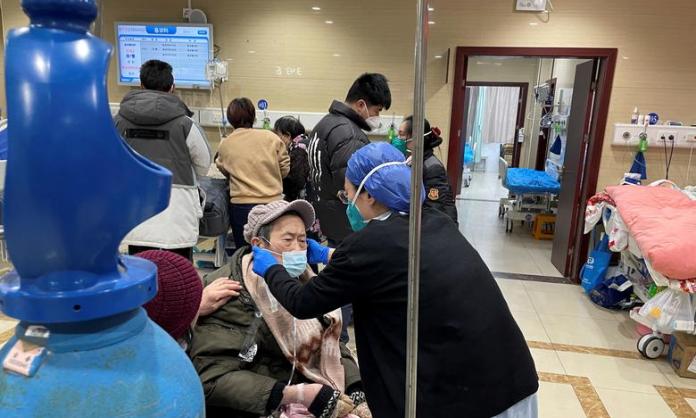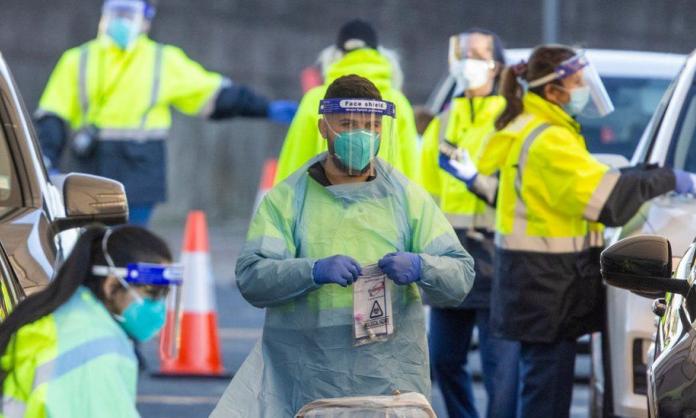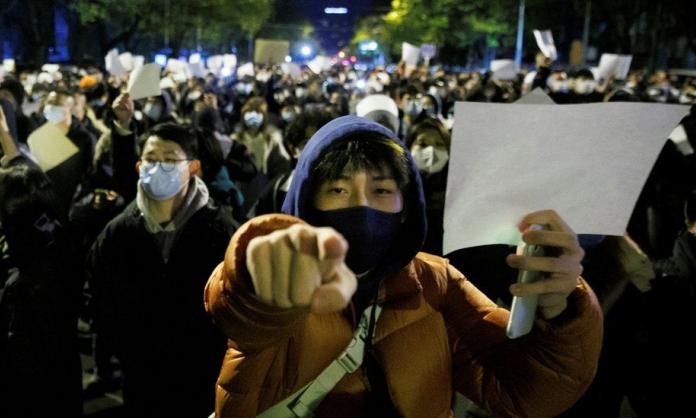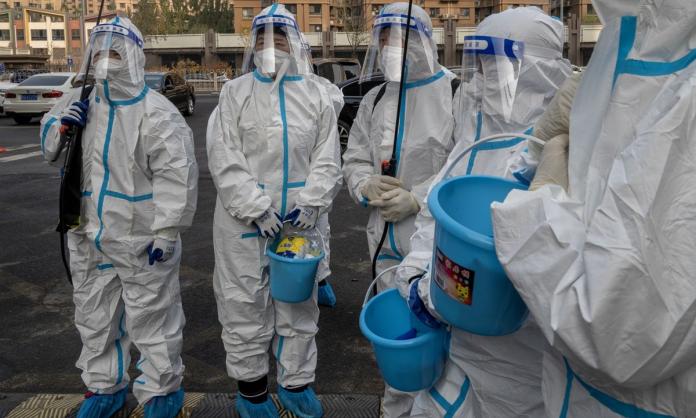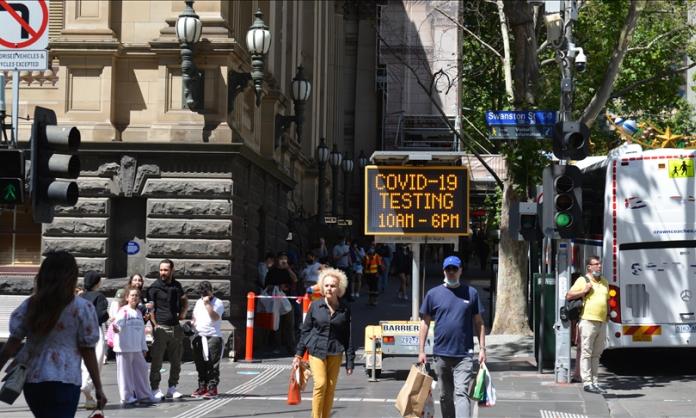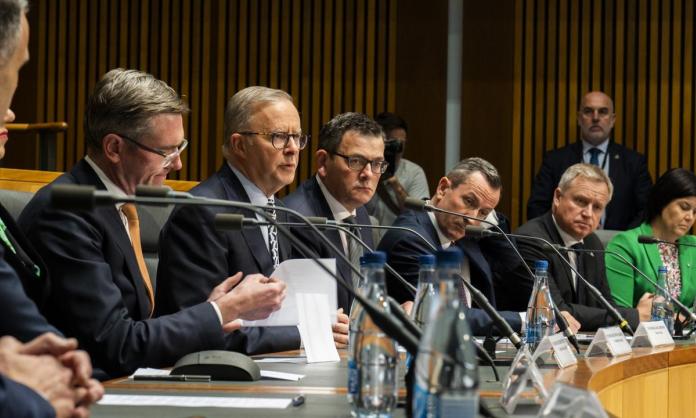The World Health Organization declared on 5 May that the public health emergency phase of the COVID-19 pandemic is over. WHO Director-General Tedros Adhanom Ghebreyesus proclaimed that the downward trend of the pandemic has “allowed most countries to return to life as we knew it before COVID-19”.
This was a partial statement of fact. Governments around the world were way ahead of the WHO, having already scrapped most of the health measures required to keep the disease at bay. They had already replaced the mantra of “Learn to live with the virus” with “What virus?”
What was left out of the WHO declaration was the awkward truth that people around the world are still dying and suffering long-term debilitating health effects from the virus. COVID-19 remains a leading cause of death in most countries (it’s number three in Australia). Worldometer, one of the many online sources run by scientists attempting to make what data there is publicly available, puts the death toll of the pandemic so far at nearly 7 million.
But if you look up WHO figures for COVID deaths, you find a total of just 1,345 worldwide for the week to 14 June. What is striking about the data as you scroll down the page is that most countries registered zero deaths. After Afghanistan (two deaths), Australia is the next country, with 240 deaths, that records anything. Bolivia records two, Brazil 384, China one, the United States zero.
Altogether, the countries that the WHO classifies as “high income” and “upper middle income” account for 1,301 of the recorded deaths. This is not because COVID-19 is killing more people in them, but because these countries are more likely to have some remnant of record keeping still in place. Total deaths, whether recorded or not, are disproportionately in poorer countries.
Even in the wealthiest countries (witness the US’s zero deaths), the records do not reflect reality. In the past twelve months, the disease has been recorded by US government bodies as the cause of around 125,000 deaths. That’s a death rate two to ten times that of US deaths from the flu.
The US Centers for Disease Control and Prevention acknowledged that reduced data availability (for example, US hospitals no longer have to report when cases of COVID are contracted by patients in their facilities) means that it can no longer reliably calculate rates of community transmission.
As Matt Mazewski, a fellow at the think tank Data for Progress, recently wrote in Commonweal magazine: “Donald Trump rightly got blowback from many quarters for musing in 2020 that ‘if we stop testing, we’d have fewer cases’, but his successor has brought his vision closer than ever to reality. When it comes to Covid, there is now a solid bipartisan consensus that ignorance is bliss”.
And for the capitalist class and its mouthpieces in government and the media, it is. COVID denialism serves the interests of the ruling class well.
The measures that would dramatically reduce transmission and the social burden of the disease are already well known. Epidemiologists and other scientists have developed an array of health measures that should be implemented, from ventilation and air purification in all indoor public spaces, along with vaccination, testing, contact tracing, supported isolation, waste-water monitoring, the use of high-quality masks, funding for cures and research into “long COVID”.
But while every one of these meets the demands of human need, none of them meets the demands for business profit. Instead, in the US, vaccines, antiviral treatments and high-quality PCR tests will no longer be paid for by the government and provided free to all. Instead, companies such as Pfizer and Moderna intend to jack up the prices of their vaccines well above cost. White House Covid Coordinator Ashish Jha spoke enthusiastically about this at an event sponsored by the US Chamber of Commerce Foundation, telling attendees: “My hope is that in 2023, you’re going to see the commercialisation of almost all of these products”.
But ignorance is not bliss for the working class and poor of the world, disproportionately more likely to die and to be less able to cope with the effects of long COVID and other effects of the virus. Infection can increase the risk of developing other chronic health problems, including cardiovascular disease, auto-immune conditions or neurological disorders. According to the WHO, “current evidence suggests approximately 10-20 percent of people experience a variety of mid- and long-term effects”.
All of which gives the lie to any idea that capitalism has any concern for the lives of those on whose labour it depends. Nor should the hypocrisy around COVID be a surprise. It’s hardly unique. The system rewards bosses for exploitation, landlords for evicting people, arms companies for dealing death, fossil fuel and mining companies for destroying the planet, and much more.
What the capitalists really care about was succinctly revealed in a 2023 PwC report titled “Changing places: how hybrid working is reinventing the Australian CBD”, which laments in its conclusion: “We may look back at the COVID-19 era as one that adversely impacted the owners of CBD properties”.
As ever, the priorities of capitalism are not human life. Last month, the US ruling class used the manufactured crisis of a self-imposed debt ceiling to cut social spending by $136 billion. With support from both Democrats and Republicans, Congress also added work requirements to getting food stamps, restarted student loan repayments, approved another natural gas pipeline, froze health spending and clawed back $27 billion in COVID spending. It also approved tax cuts for the rich and nearly a trillion dollars for the military.
The message couldn’t be clearer. From a capitalist point of view, COVID-19 is too expensive to manage in a way that prioritises human life and health.





